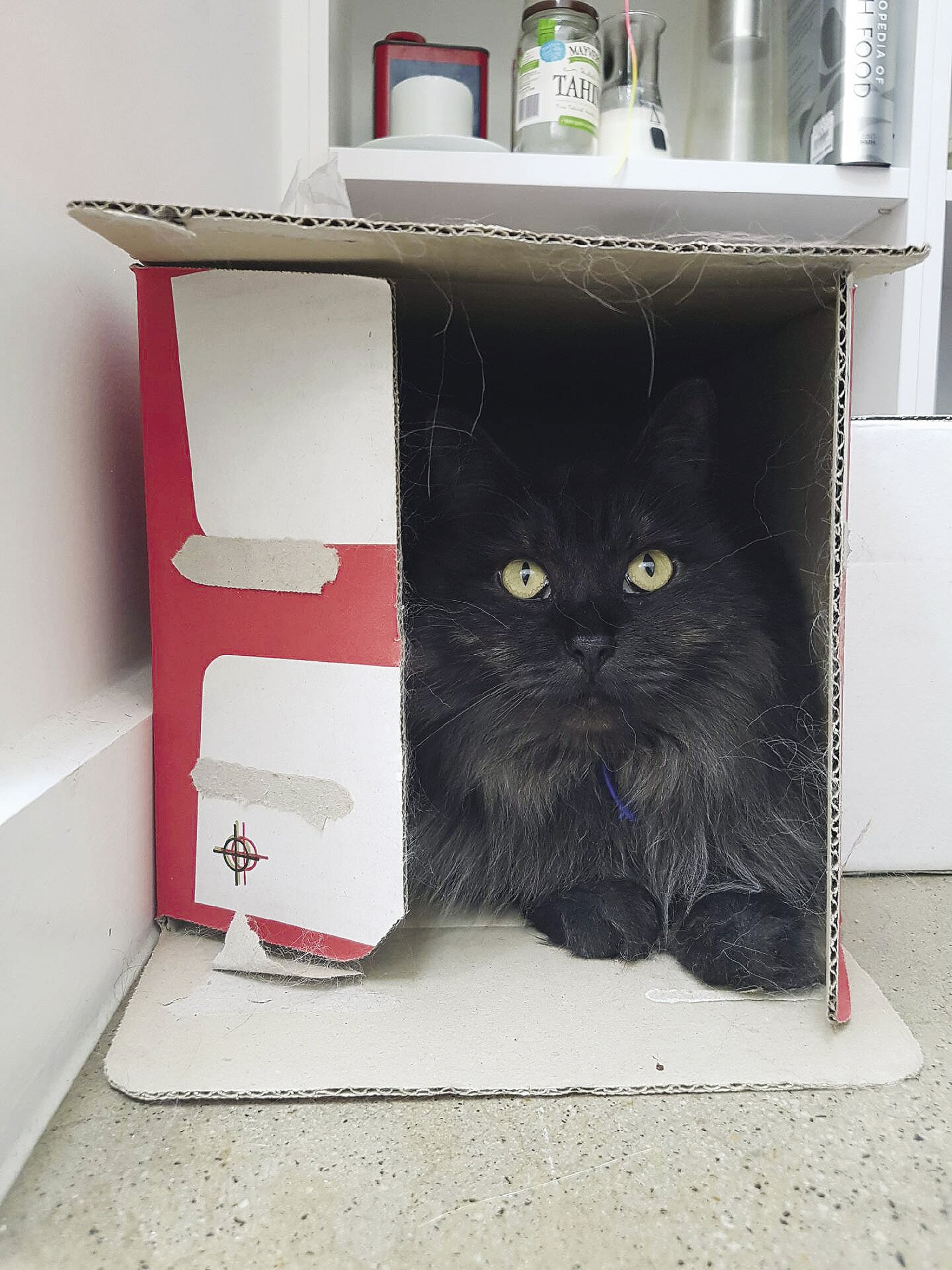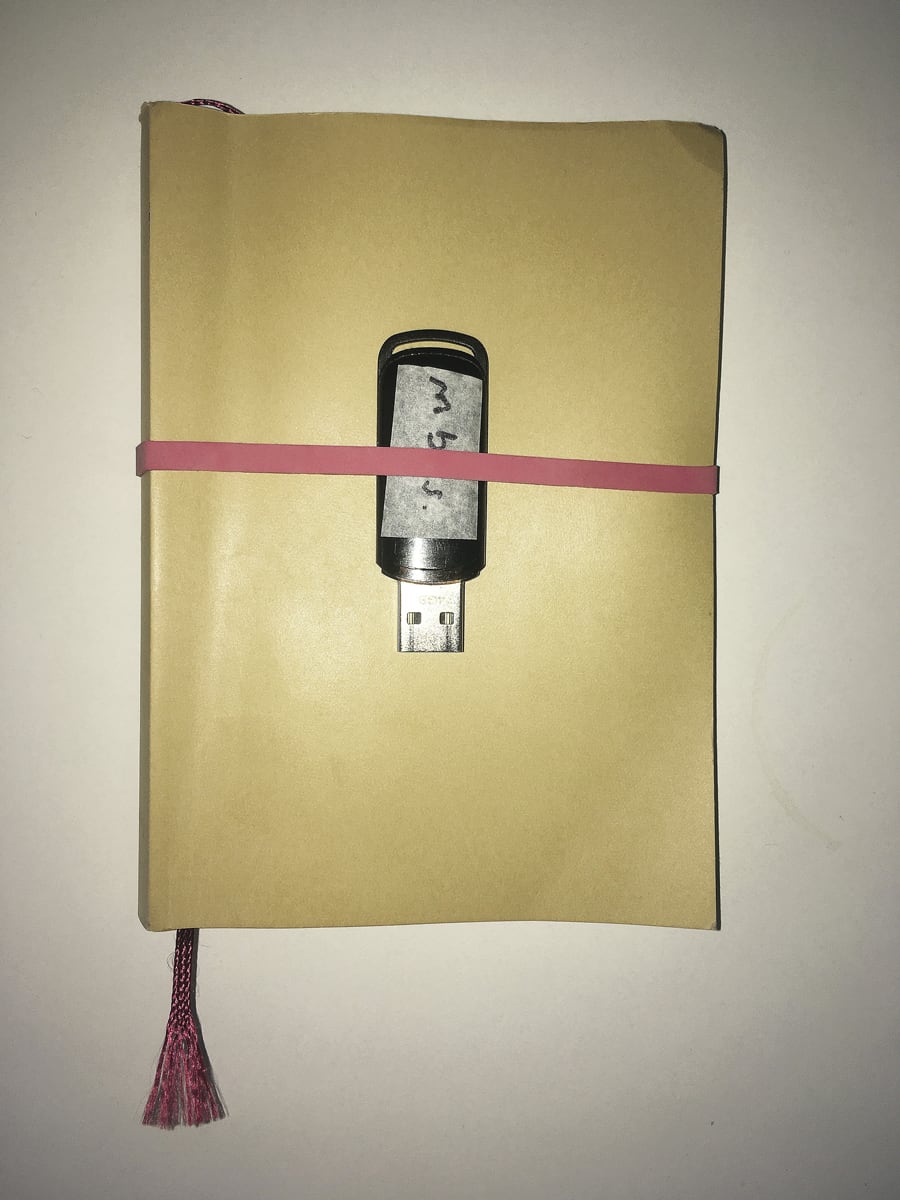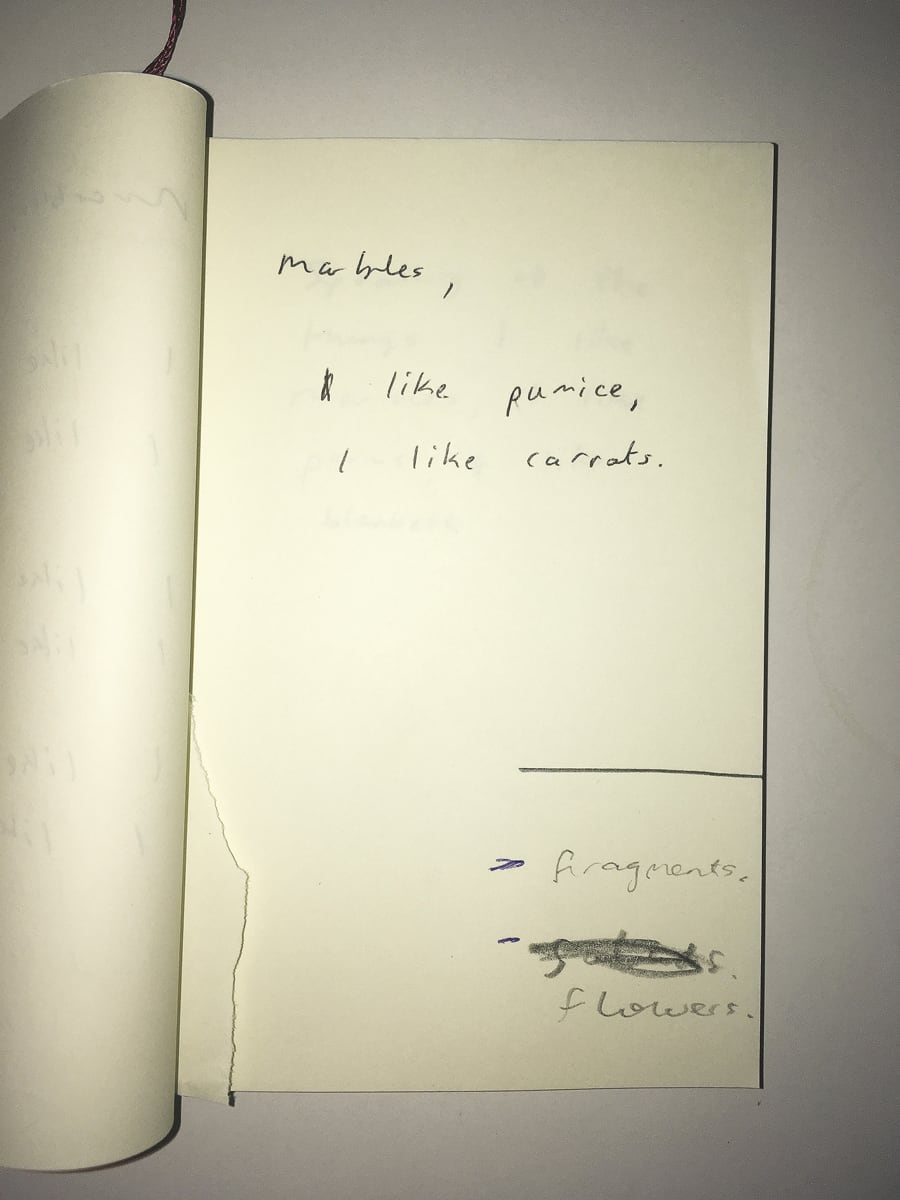 In Art and Ventriloquism, David Goldblatt examines the complex back and forth that occurs between artist, artwork, and audience as a mode of exchange akin to the way in which a ventriloquist animates their dummy. Goldblatt draws many comparisons between ventriloquism and art-making in terms of how they both facilitate a unique mode of speaking in other voices. This he likens to the ancient Greek notion of ekstasis: that being a stepping outside of the self, a being beside oneself.1 This process of getting outside, and beside, oneself occurs through a self-ventriloquised exchange whereby the artist is ‘being two selves simultaneously, of being conscious of oneself and beside oneself as well … as if listening to another while, at the same time, speaking for that other’.2 I will use this concept of synchronised speaking and listening with oneself as the basis for a critical reflection on a recent text-sound work of my own titled Lullaby for Marbles, considering how a self-ventriloquial exchange took place in its making. In doing so, my aim is to question who is talking in this work, and to whom? In answering this, I will examine the crucial role of engaging an inner voice in Goldblatt’s ventriloquised conversational model, looking at the work in progress as a stage in artistic practice that is particularly suitable for such an exchange. And finally, I’ll raise some ideas on where I think the self-ventriloquised inner voice ends up when talking with oneself by investigating the relationship between audio technology and the body.
The text-sound work in question, Lullaby for Marbles, was produced for a cat named Marbles that was adopted by friends in 2016. This work was made at the suggestion of one of the owners, in an attempt to help Marbles settle into their new home and overcome the anxieties of an inner-city environment. The idea was for me to make a recording that collaged together various domestic ambiences — such as muffled conversations from other rooms, and background TV and radio noise — and have the final piece play on loop in the house to soothe Marbles. I began the work by capturing various domestic sounds, then moved on to record the muffled talking element: so far, so good. I had the thought that, rather than random nonsensical mumbling to create the impression of a conversation, I could list things that I liked off the top of my head, various things such as objects and food. My intention was that, in naming various comforts and pleasantries, Marbles might register some sort of contentment or relaxedness in my voice, and in turn feel soothed to some degree.
To address the question posed above of who is talking to whom in this work, I was fairly confident at the outset that it would be me talking to Marbles. But as I began making the vocal recordings, things took a turn. After several minutes of casually rattling off my likes, an inner voice bubbled up, problematising the situation. This inner voice arrived with scepticisms and confusions about why I was saying what I was, challenging the intention and derailing my attempted soothing address to Marbles. This voice was not a clearly defined singular other voice, but a hybridised mutation of several voices: my own self doubts; half-remembered passages from literature on psychology and mental illness; fragments of self-help style mantras; lines from films, songs and novels. Denise Riley articulates the chaotic, polyvocal nature of inner speech well, describing it as:
In Art and Ventriloquism, David Goldblatt examines the complex back and forth that occurs between artist, artwork, and audience as a mode of exchange akin to the way in which a ventriloquist animates their dummy. Goldblatt draws many comparisons between ventriloquism and art-making in terms of how they both facilitate a unique mode of speaking in other voices. This he likens to the ancient Greek notion of ekstasis: that being a stepping outside of the self, a being beside oneself.1 This process of getting outside, and beside, oneself occurs through a self-ventriloquised exchange whereby the artist is ‘being two selves simultaneously, of being conscious of oneself and beside oneself as well … as if listening to another while, at the same time, speaking for that other’.2 I will use this concept of synchronised speaking and listening with oneself as the basis for a critical reflection on a recent text-sound work of my own titled Lullaby for Marbles, considering how a self-ventriloquial exchange took place in its making. In doing so, my aim is to question who is talking in this work, and to whom? In answering this, I will examine the crucial role of engaging an inner voice in Goldblatt’s ventriloquised conversational model, looking at the work in progress as a stage in artistic practice that is particularly suitable for such an exchange. And finally, I’ll raise some ideas on where I think the self-ventriloquised inner voice ends up when talking with oneself by investigating the relationship between audio technology and the body.
The text-sound work in question, Lullaby for Marbles, was produced for a cat named Marbles that was adopted by friends in 2016. This work was made at the suggestion of one of the owners, in an attempt to help Marbles settle into their new home and overcome the anxieties of an inner-city environment. The idea was for me to make a recording that collaged together various domestic ambiences — such as muffled conversations from other rooms, and background TV and radio noise — and have the final piece play on loop in the house to soothe Marbles. I began the work by capturing various domestic sounds, then moved on to record the muffled talking element: so far, so good. I had the thought that, rather than random nonsensical mumbling to create the impression of a conversation, I could list things that I liked off the top of my head, various things such as objects and food. My intention was that, in naming various comforts and pleasantries, Marbles might register some sort of contentment or relaxedness in my voice, and in turn feel soothed to some degree.
To address the question posed above of who is talking to whom in this work, I was fairly confident at the outset that it would be me talking to Marbles. But as I began making the vocal recordings, things took a turn. After several minutes of casually rattling off my likes, an inner voice bubbled up, problematising the situation. This inner voice arrived with scepticisms and confusions about why I was saying what I was, challenging the intention and derailing my attempted soothing address to Marbles. This voice was not a clearly defined singular other voice, but a hybridised mutation of several voices: my own self doubts; half-remembered passages from literature on psychology and mental illness; fragments of self-help style mantras; lines from films, songs and novels. Denise Riley articulates the chaotic, polyvocal nature of inner speech well, describing it as:
A sludgy thing, thickened with reiterated quotation, choked with the rubble of the overheard, the strenuously sifted and hoarded, the periodically dusted down then crammed with slogans and jingles, with mutterings of remembered accusations…3

Simply expression or monolithic intention, [but] often a set of fragmentary stops and starts, numerous intentional acts mingled with accidents, some only barely related to the finished work by the time the work stops.4The work in progress might be considered as governed by conditions of uncertainty that in turn create favourable conditions for the fractured, unfixed inner voice to flourish. What the work in progress creates, and what I think occurred in recording Lullaby for Marbles, is a haphazard, fractured setting that seems to encourage willingness for the odd inner voice to come out. As a fragmentary stage of stops and starts in a work’s creation, the work in progress’s evolving, deforming and morphing conditions allow the inner voice to more easily seep out, become present, and talk with me. In reflecting on the nature of the inner voice, how it arises during the work in progress, and how it facilitates a self-ventriloquised exchange, I want to conclude by considering where this voice ends up: if it is outside me, and moving through Marbles, then where is it? The inner voice has been captured via the recording, but this is simply a document, rather than the site where it took shape. To discuss the physicality of the inner voice is perhaps redundant though, as it is formless with no definite body. It requires this amorphous state to be able to move from me, through Marbles, and land outside and beside myself, so as to be able to participate in the self-ventriloquised exchange I have outlined above. If it is the work in progress that summons the inner voice out, then I think it is the action of recording and processing it that creates its presence, and which gives it potentiality to talk with myself. Understanding where it is then becomes about understanding how it has been transformed, and how these transformations — such as the layering, stretching, modulation, and techniques of obscuring the voice that occurred in the making of Lullaby for Marbles — echo the disunity and scattered nature of the inner voice. In discussing voice, body, audio technology and the production of subjectivity, N. Katherine Hayles argues for a reconsideration of the body due to the advent of audio recording technology. Hayles notes historical notions of the link between the body and voice in terms of presence, and suggests that with transformation of the voice through recording and editing, the body too undergoes similar alterations. The importance for Hayles is the role audio technology plays in altering the inherent bind between voice and body by creating ‘the realization that the body and voice no longer go together. Voice can persist through time outside the body, confronting the subject as an externalised other.’5 If the altered voice captured in Lullaby for Marbles — the externalised mumbler that confronts me — formed through audio processing that mutates and merges this voice with other sounds, then perhaps similar effects resonate with my own body through the self-ventriloquised dialogue I exchange with this other mumbling me? Hayles uses the metaphor of the body-as-tape-recorder to describe this process, and it is with the substitute technological body employed in Lullaby for Marbles that the production of the conflicted muffled other occurs, which in turn affects me.6 Somewhere in this discordant attempt to soothe a cat, the other me that gains a voice does not speak for me or against me, but rather, with me: recognisable but strange, shadowy and outside yet immanent, mangled but meaningful. This uncanny other voice lays in wait sonically slumped beside me like an inert ventriloquist’s dummy, ready to talk. All I need to do is just say the words.
A companion piece to this article is available online as part of un Extended 11.1.
1. David Goldblatt, Art and Ventriloquism, Routledge, London, 2006, p. 33.
2. Ibid., p. 39.
3. Denise Riley, The Force of Language, Palgrave Macmillan, Gordonsville, 2004, p. 20.
4. Goldblatt, p. 46.
5. N. Katherine Hayles, ‘Voices Out of Bodies, Bodies Out of Voices: Audiotape and the Production of Subjectivity’, in Adelaide Morris (ed.) Sound States: Innovative Poetics and Acoustical Technologies. The University of North Carolina Press, Chapel Hill, 1997, pp. 78.
[^6]: Ibid., p. 78
